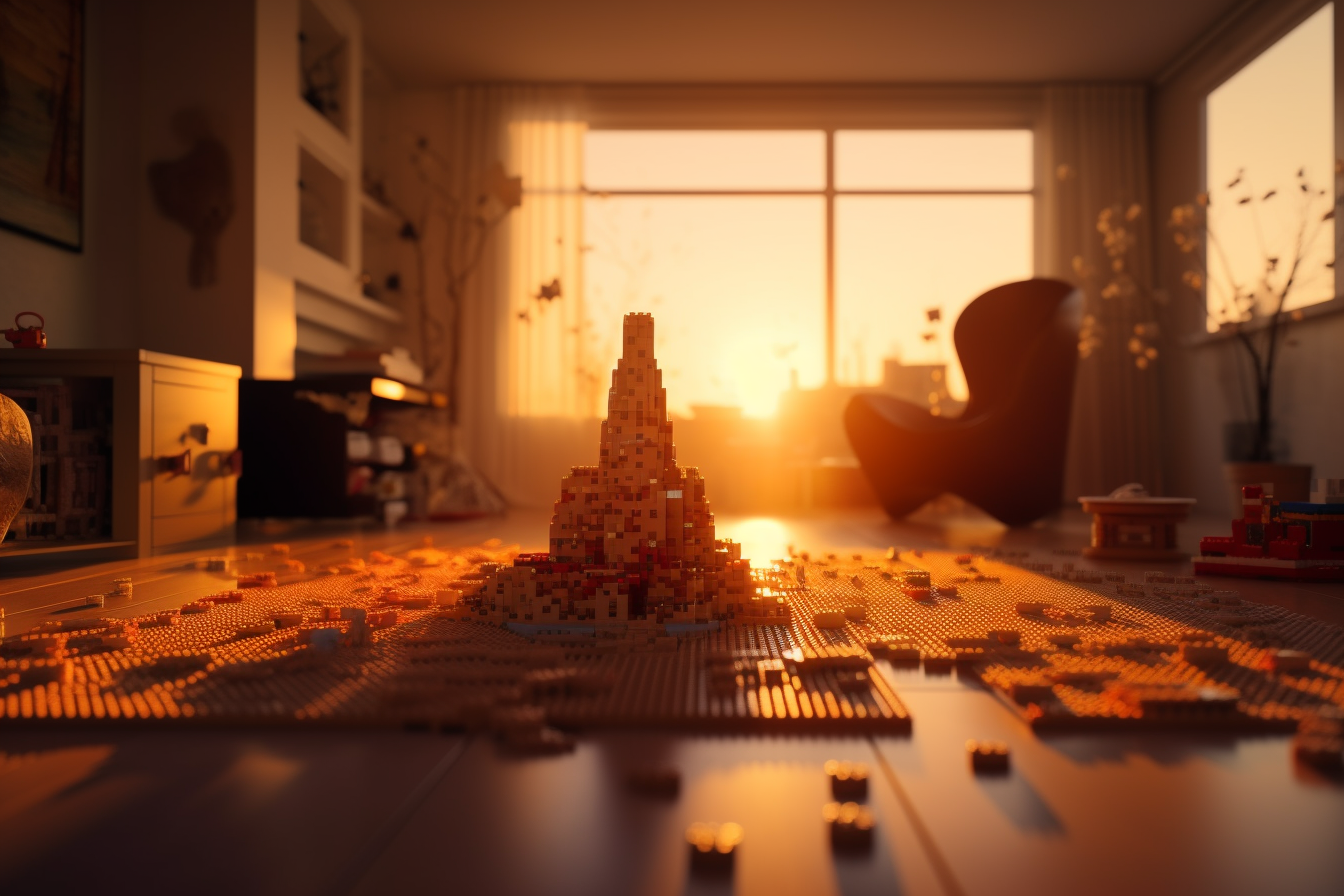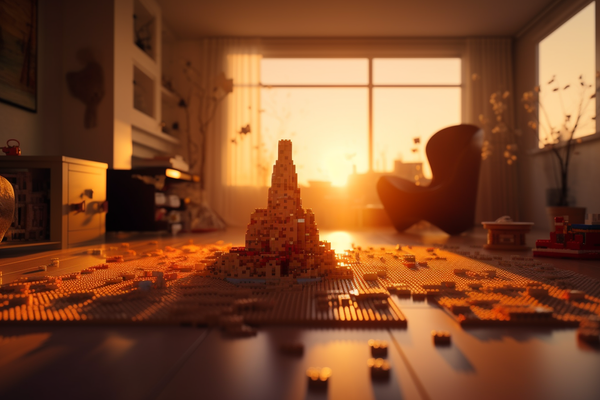"I want to do it like this, Appa," my three-year-old protested. The evening sun had just waved goodbye, and the familiar colors of twilight painted the sky outside. There we sat, cross-legged on the living room floor—she in her favorite dinosaur jammies, and I, cradling a cup of masala chai. Everything was perfect. Except for a triangular Lego piece. It had put a wedge between us.

In front of us stood a wonky, incomplete, kaleidoscopic tower. Its chaotic form defied symmetry and structural integrity. Unused pieces surrounded us like a pride of angry lions guarding their territory. Unlike their traditional counterparts, these translucent magnetic blocks opened a world of boundless creativity. They could intertwine gracefully like synchronized ice skaters, unlocking infinite possibilities.
The only thing that limited us was our imagination.
The scene had all the ingredients of a father patiently teaching his daughter. Little did I know that it was I who was going to be schooled that evening.
I had garnered my daughter's ire after removing an elongated red triangle from the side of the structure. Before you judge me as a tiger dad, let me present my case. It stood out like a hand-drawn mole on Mona Lisa's face. I swear.
I explained how these long pointy shapes were best saved for the roof. I quickly pulled up my phone and showed her an ancient castle. I pointed to the sharp roofs atop each steep tower.
Just as my confidence in her design choices waned, her faith in my guidance diminished.
She was having none of it. "I don't like this," she said, eyes closed disapprovingly.
How could I make her see? As a seasoned researcher, my mind habitually sought solutions forged by logic and coherence. Mentors had etched the mantra "clarity over cleverness" deep into the recesses of my prefrontal cortex. In my work, I revered the harmony of function and lucidity. During talks and presentations, I wove ideas with clear, simple language.
Now, confronted with this Lego endeavor, I found myself celebrating structural integrity and conventional aesthetics over my daughter's whimsical imagination. Inadvertently, I was guiding her toward these principles and away from the boundless potential of her creativity.
She took the piece back from me and restored it to its original position. The blot was back on the canvas. But before I could say anything, she pulled out a small doll that fit snugly in her palm. She put it in my hand and said, "I'm making a balcony for this, Appa. See?" Her words hit me like a ton of bricks. My hand could fit five of her tiny hand easily. Yet, her imagination and creativity dwarfed mine. In my obsessive need to champion clarity, I had abandoned my creativity.
The only thing that was limited was my imagination.
As adults, we often confine ourselves to a single path, forgetting that there's a world of possibilities to achieve our goals. We flex our clarity muscles tirelessly while our creativity muscles atrophy like neglected leg days at the gym.
My daughter, however, embraced potential over practicality. I was hardwired. She was hardly wired. Where I saw barriers, she saw opportunities. When I asked, "Why?" she challenged, "Why not?".
I had forgotten the exhilaration of simply trying things out. While I was fixated on creating a perfect structure, she sought the joy of unrestricted exploration.
Where else in my life had I been limited by my tunnel vision? How could I approach seemingly mundane situations with renewed curiosity and openness? What would my life look like if I embraced a more imaginative approach in my adult world?
In that moment with my daughter, I found the innocence that comes from not having fallen down a hundred times. I drank from the pure fountains of blissful exploration. I learned it was ok to fail and simply revel in the excitement of navigating a foggy path. The goal, I realized, isn't the only thing that matters; the journey matters just as much, if not more.
I needed to embrace a beginner's mindset to foster creativity.
I looked at the wonky tower once more. It now radiated beauty and possibility. Its asymmetry and unconventional design spoke of my daughter's unbridled creativity. I marveled at its charm. I no longer saw it as a structure to be corrected but as a monument that corrected my need for structure.
My daughter took my blinders off that evening. It's time to wake up your inner child and unleash your imagination.
What are you waiting for?
